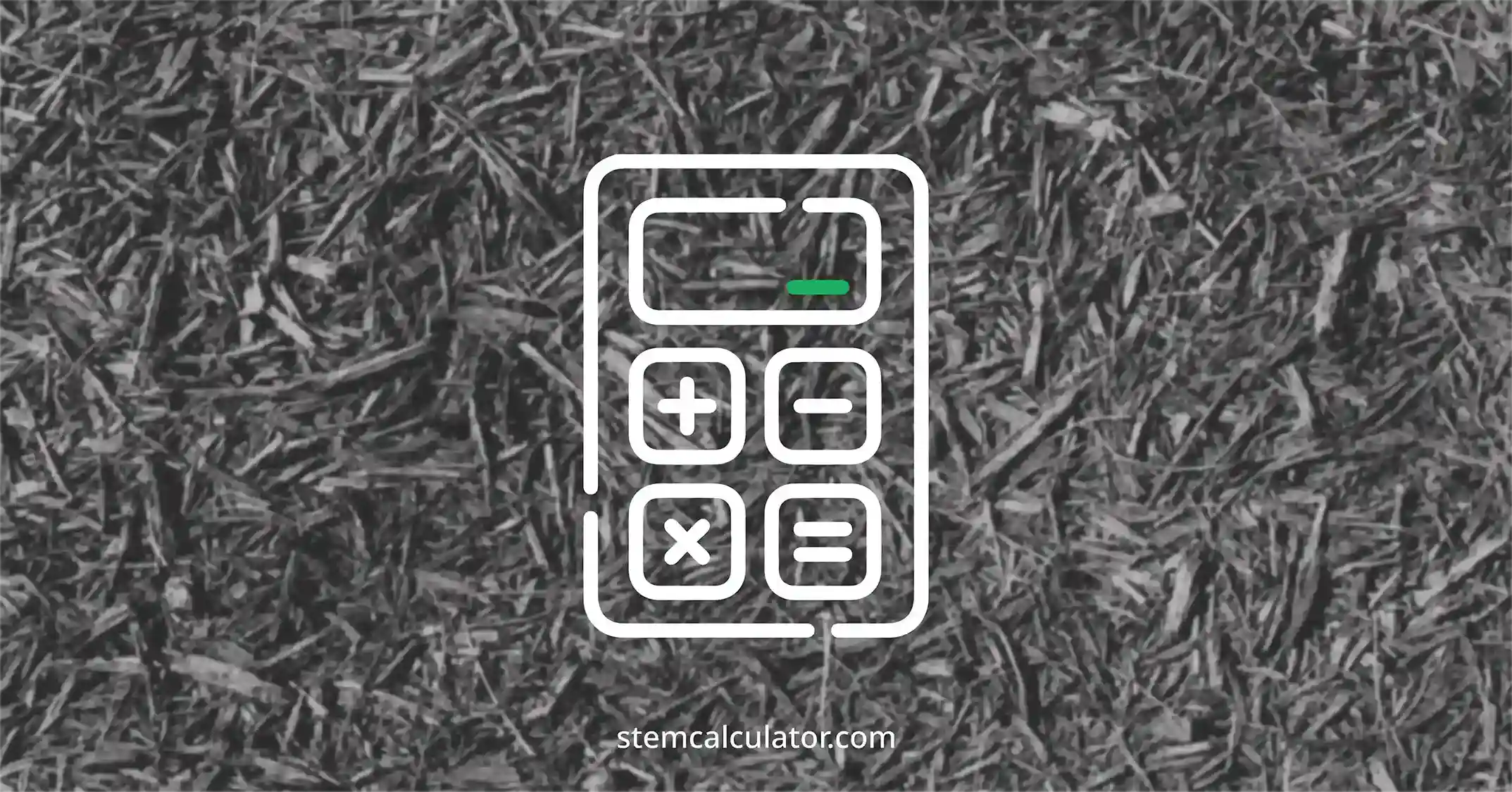Gardening is both an art and a science. The perfect garden combines aesthetics and functionality, with every plant in harmony with its surroundings. One of the unsung heroes of a well-maintained garden is mulch. Mulch not only beautifies your garden but also improves soil health and conserves water. But, the question many gardeners grapple with is, “How much mulch do I need?” This is where our Mulch Calculator comes into play.
What is Mulch and Why Use It?
Mulch is any material spread or laid over the surface of the soil as a covering. Organic mulches, such as bark, wood chips, and compost, decompose over time, adding beneficial nutrients to the soil. Inorganic mulches, like stones and rubber, don’t decompose and are useful for long-term landscaping.
Benefits of Mulch:
- Weed Control: Mulch acts as a barrier, reducing the amount of sunlight that reaches the soil, thus inhibiting weed growth. According to the USDA, mulch can help reduce weed growth significantly.
- Moisture Retention: It helps retain soil moisture by reducing evaporation, as highlighted by Iowa State University Extension.
- Temperature Regulation: Mulch keeps soil temperatures cooler in the summer and warmer in the winter. This helps protect plant roots from extreme temperatures, as noted by Penn State Extension.
- Aesthetics: It provides a finished look to your garden.
- Soil Improvement: Organic mulches decompose and enrich the soil, improving its structure and fertility over time (USDA, Penn State Extension).
How to Use the Mulch Calculator
Our Mulch Calculator is designed to simplify your gardening efforts. By inputting the area of your garden and the desired depth of mulch, you can easily determine how much mulch you need.
- Measure Your Garden Area: Use a measuring tape to find the length and width of your garden bed in feet.
- Decide on Mulch Depth: Common depths range from 2 to 4 inches.
- Input the Values: Enter the area (in square feet) and the desired depth (in inches) into the Mulch Calculator.
- Calculate: Click on the calculate button to get the volume of mulch required in cubic feet, cubic yards, and cubic meters.
For example, let’s calculate how much mulch you’d need for a garden bed that is 10 feet long by 5 feet wide, with a desired mulch depth of 3 inches.
- Convert the depth to feet: 3 inches ÷ 12 = 0.25 feet
- Calculate the area: 10 feet × 5 feet = 50 square feet
- Calculate the volume in cubic feet: 50 square feet × 0.25 feet = 12.5 cubic feet
- Convert to cubic yards: 12.5 cubic feet ÷ 27 = 0.46 cubic yards
Volume Conversion Table:
| Area (sq ft) | Depth (in) | Volume (cu ft) | Volume (cu yd) | 2-cu ft Bags |
| 100 | 2 | 16.67 | 0.62 | 8.34 |
| 100 | 3 | 25 | 0.93 | 12.5 |
| 100 | 4 | 33.33 | 1.23 | 16.67 |
Understanding Measurements
Cubic Feet: A cubic foot is a volume measurement. One cubic foot equals 12 inches long, 12 inches wide, and 12 inches deep.
Cubic Yards: There are 27 cubic feet in one cubic yard (3 feet long, 3 feet wide, and 3 feet deep). To convert cubic feet to cubic yards, divide the number of cubic feet by 27.
Bags: Mulch is often sold in bags, typically containing 2 or 3 cubic feet. To determine the number of bags you need, divide the total cubic feet by the bag size.
Conclusion
The Mulch Calculator is a handy tool for every gardener, whether you’re a novice or an expert. It simplifies the process of determining how much mulch you need, ensuring that you buy just the right amount. This not only saves you money but also helps in achieving a beautiful, well-maintained garden.
For more detailed information on the benefits and types of mulch, you can visit resources like the USDA, Iowa State University Extension, and Penn State Extension.

